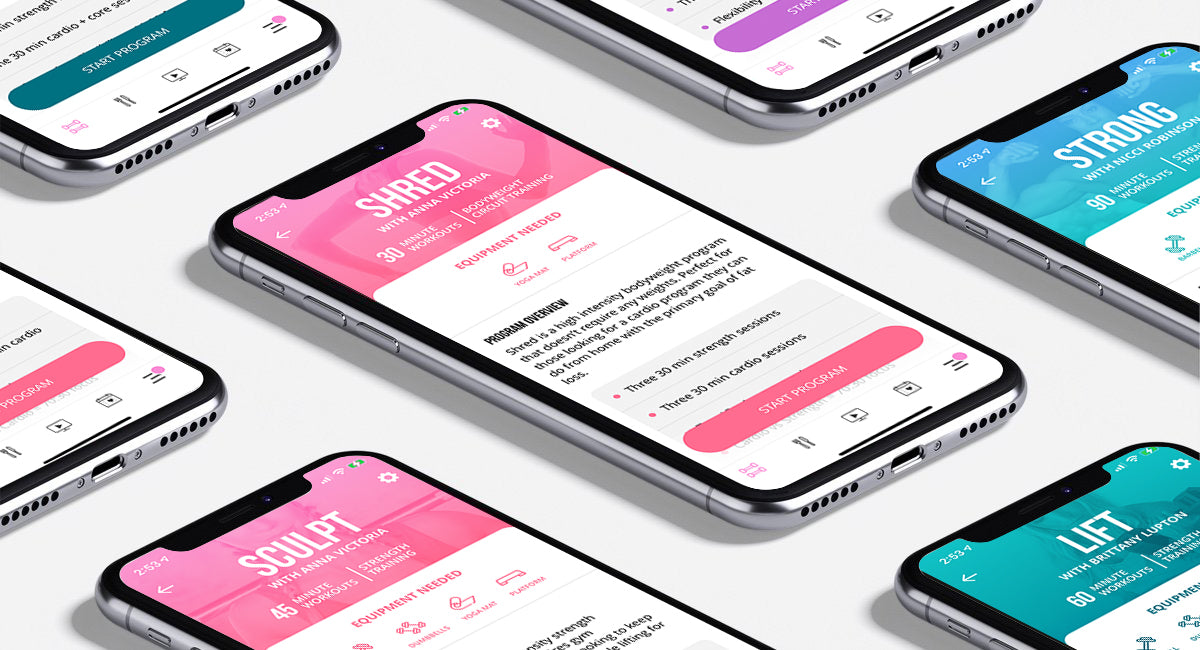3 Ways Recovery Impacts Results + 9 Ways to Optimize Recovery

You bench press, front squat, deadlift, shoulder press, and plank, and at the end of your strength-training session you have that wonderfully tired but accomplished feeling. Bring on the strength gains and progress… right?
Not so fast. What you do between your workouts sessions, including stretching, foam rolling, massage, and complete rest days are just as important to your results — and overall health — as what you do during the main part of your workouts.
Sometimes, people can feel like resting is counterintuitive to their goals. "Do more = more results" is a common misconception that unfortunately, can lead you down a path of burnout, injury, and simply seeing less progress than you could be had you given your body a bit of TLC!
Recovery is the process of allowing the body to repair and replenish itself after a workout and it’s during this time that you actually build muscle.
So even when you’re tempted to go all out, here’s why you need recovery sessions, rest days, and ways you can optimize them.
Why Recovery Is Important
Recovery is important for several reasons. Here are some of the key reasons why you should prioritize recovery after a workout:
1. Reduces the Risk of Injury
When you exercise, you put stress on your body. Over time, this stress can lead to wear and tear on your muscles, tendons, and ligaments, which can increase the risk of injury. Recovery helps reduce this risk by allowing your body to repair and rebuild damaged tissues, according to WebMD.
2. Improves Workout Performance
Recovery is also essential for improving performance over time. When you work out, you deplete your energy stores and cause micro-tears in your muscles, according to an October 2021 study in Science.
Proper recovery allows your body to replenish these stores and repair the damage, which can lead to better performance during your next workout.
3. Prevents Burnout and Overtraining
Recovery is also crucial for preventing burnout. Overtraining can lead to physical and mental exhaustion, which can make it difficult to maintain a consistent workout routine, per a March 2012 study in Sports Health. Proper recovery helps prevent burnout by allowing your body to rest and recharge.
How to Recover Properly From a Workout
OK, you’re convinced to need to incorporate various workout recovery strategies into your routine. Now what? Here are some tips to help you recover after a workout:
1. Cool Down
After a workout, it's important to cool down to bring your heart rate and breathing back to normal. This can be done by performing light cardio exercises such as walking, jogging, or cycling.
For example, you can do 5 to 10 minutes of jogging and walking after a run or easy cycling (lower resistance and speed) after a bike ride. After strength training, that might look like 2 to 5 minutes of walking around the gym to give you a chance to catch your breath and lower your heart rate, followed by stretching (see below).
2. Stretch
Stretching is also an important part of recovery. It helps to reduce muscle soreness and increase flexibility and range of motion. Stretching should be done after the cool down when the muscles are still warm. It's essential to stretch all major muscle groups, holding each stretch for 15 to 30 seconds.
And if your workout focuses heavily on one muscle group (hello, leg day!), make sure you stretch those muscles really well.
3. Hydrate
During exercise, your body loses fluids through sweat. It's important to rehydrate after a workout by drinking plenty of fluids — especially water.
The American College of Sports Medicine (ACSM) recommends drinking 17 ounces of fluid two hours before exercise. There's no one-size-fits-all rule for how much to drink during exercise, but ACSM says you should drink at regular intervals to replace the water you lose through sweating.
And, of course, aim to drink 8 to 10 glasses of water per day, even if it’s a rest day.
4. Eat a Balanced Meal
Eating a balanced meal after a workout is also important. Your body needs fuel to recover and repair, so it's important to eat a meal that includes carbohydrates, protein, and healthy fats.
The American Council on Exercise (ACE) suggests having a meal with carbohydrates and protein 30 to 45 minutes post-workout to facilitate the recovery process. The ACE also recommends consuming 15 to 25 grams of protein and 1 to 2 grams of carbs per 2.2 pounds of body weight per hour of glycogen-depleting exercise (running, HIIT, etc.).
Examples of good post-workout meals include a chicken and vegetable stir-fry, a turkey sandwich with avocado and whole-grain bread, or a quinoa and vegetable salad. And if you don’t feel like a full meal, make sure you at least have a protein shake.
5. Get Enough Sleep
Sleep is crucial for recovery, as it allows your body to repair itself and replenish fuel stores. Aim to get 6 to 9 of sleep each night. Sleep needs vary person to person, but the American Academy of Sleep Medicine recommends adults get a minimum of 7 hours of sleep every night.
Additionally, if you're feeling particularly sore after a workout, taking a short nap during the day — if you’re able — can also be beneficial.
6. Take Rest Days
Rest days are crucial for recovery. Your body needs time to rest and repair after you’ve pushed it hard for several sessions, so it's ideal to take at least one full rest day per week. And according to the ACSM, you should allow at least 48 hours between high-intensity exercise of the same muscle groups.
That doesn’t mean you need to be a couch potato, though. Try walking or hiking, stretching or yoga, or light bike riding. But avoid intense workouts.
7. Use Recovery Tools
Finally, there are several recovery tools you can use to help your body recover after a workout. Foam rollers and massage balls can help relieve muscle tension and soreness.
According to a November 2015 review in the International Journal of Sports Physical Therapy, foam rolling for 10 to 20 minutes after a high-intensity workout reduced perceived pain in participants.
And consistent foam rolling for 20 minutes a day 3 days a week may help further decrease pain. Researchers say it may be due to the fact that it’s beneficial to damaged connective tissue and increased blood flow.
Another option to consider (though it’s less accessible and may be cost-prohibitive) is neuromuscular electrical stimulation (NMES). The method, as the name implies, uses low-intensity electrical currents to activate muscle fibers
A September 2014 review in the Journal of Strength and Conditioning Research found NMES may reduce subjective measures of post-workout muscle pain, though unfortunately, that benefit doesn’t extend to improved athletic performance.
8. Get a Massage
As if you need an excuse for a spa day, here’s one: Massage can help muscle recovery after strenuous sweat sessions. A May 2020 review in BMJ Open Sport and Exercise Medicine suggests that it may improve delayed onset muscle soreness (DOMS) to an extent.
9. Try the Sauna
And while you’re at the spa, why not hit the sauna as well? An October 2020 review in Exercise and Sport Sciences Review found that heat therapy may accelerate muscle recovery by helping to reduce muscle soreness and stimulate protein synthesis, among other positive effects on the vascular and cellular level.
However you choose to recover, the important thing is that you give your body — and brain — a break, while showing your muscles a little TLC.





